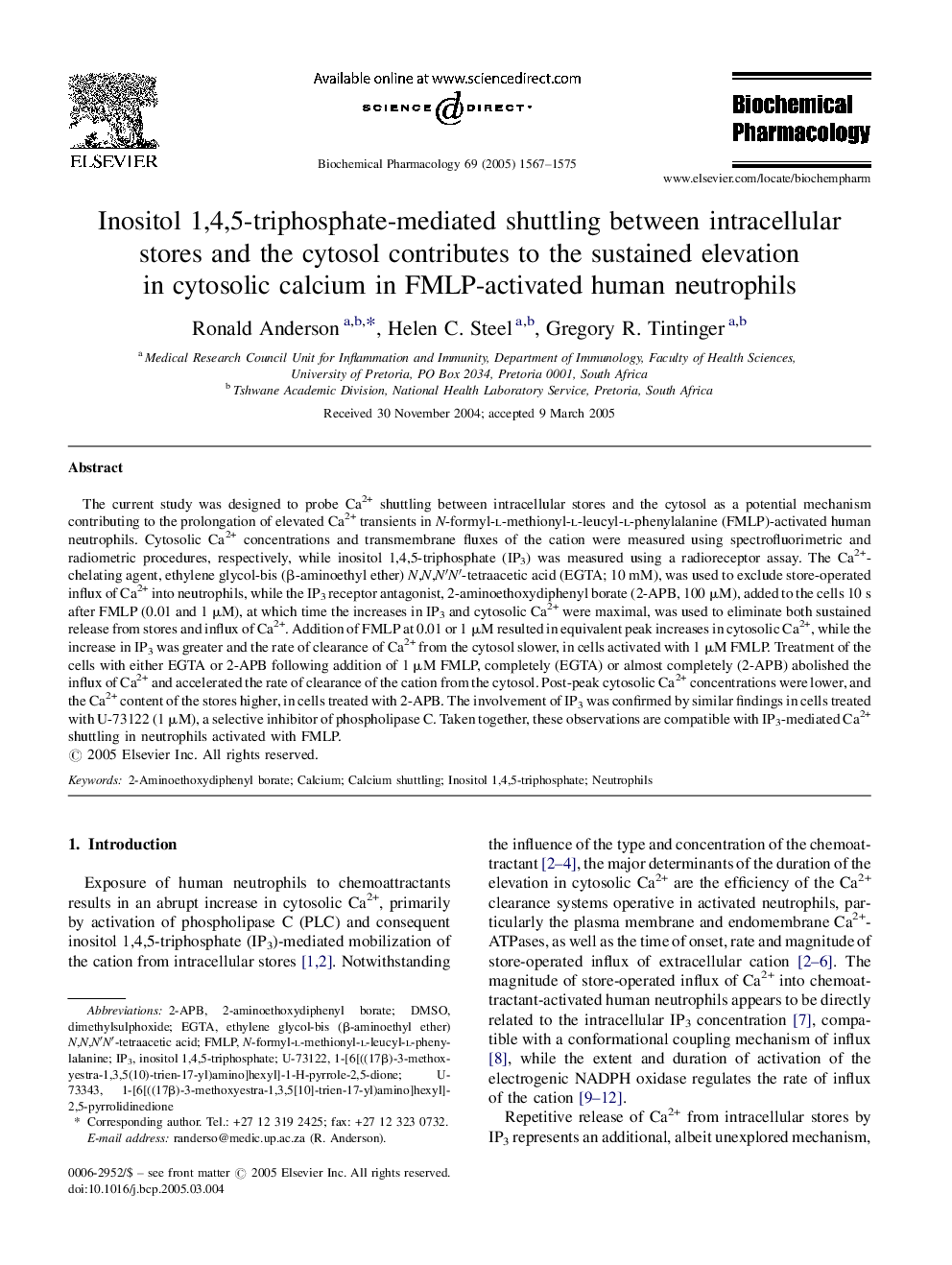| Article ID | Journal | Published Year | Pages | File Type |
|---|---|---|---|---|
| 9002070 | Biochemical Pharmacology | 2005 | 9 Pages |
Abstract
The current study was designed to probe Ca2+ shuttling between intracellular stores and the cytosol as a potential mechanism contributing to the prolongation of elevated Ca2+ transients in N-formyl-l-methionyl-l-leucyl-l-phenylalanine (FMLP)-activated human neutrophils. Cytosolic Ca2+ concentrations and transmembrane fluxes of the cation were measured using spectrofluorimetric and radiometric procedures, respectively, while inositol 1,4,5-triphosphate (IP3) was measured using a radioreceptor assay. The Ca2+-chelating agent, ethylene glycol-bis (β-aminoethyl ether) N,N,Nâ²Nâ²-tetraacetic acid (EGTA; 10 mM), was used to exclude store-operated influx of Ca2+ into neutrophils, while the IP3 receptor antagonist, 2-aminoethoxydiphenyl borate (2-APB, 100 μM), added to the cells 10 s after FMLP (0.01 and 1 μM), at which time the increases in IP3 and cytosolic Ca2+ were maximal, was used to eliminate both sustained release from stores and influx of Ca2+. Addition of FMLP at 0.01 or 1 μM resulted in equivalent peak increases in cytosolic Ca2+, while the increase in IP3 was greater and the rate of clearance of Ca2+ from the cytosol slower, in cells activated with 1 μM FMLP. Treatment of the cells with either EGTA or 2-APB following addition of 1 μM FMLP, completely (EGTA) or almost completely (2-APB) abolished the influx of Ca2+ and accelerated the rate of clearance of the cation from the cytosol. Post-peak cytosolic Ca2+ concentrations were lower, and the Ca2+ content of the stores higher, in cells treated with 2-APB. The involvement of IP3 was confirmed by similar findings in cells treated with U-73122 (1 μM), a selective inhibitor of phospholipase C. Taken together, these observations are compatible with IP3-mediated Ca2+ shuttling in neutrophils activated with FMLP.
Keywords
Related Topics
Health Sciences
Pharmacology, Toxicology and Pharmaceutical Science
Pharmacology
Authors
Ronald Anderson, Helen C. Steel, Gregory R. Tintinger,
